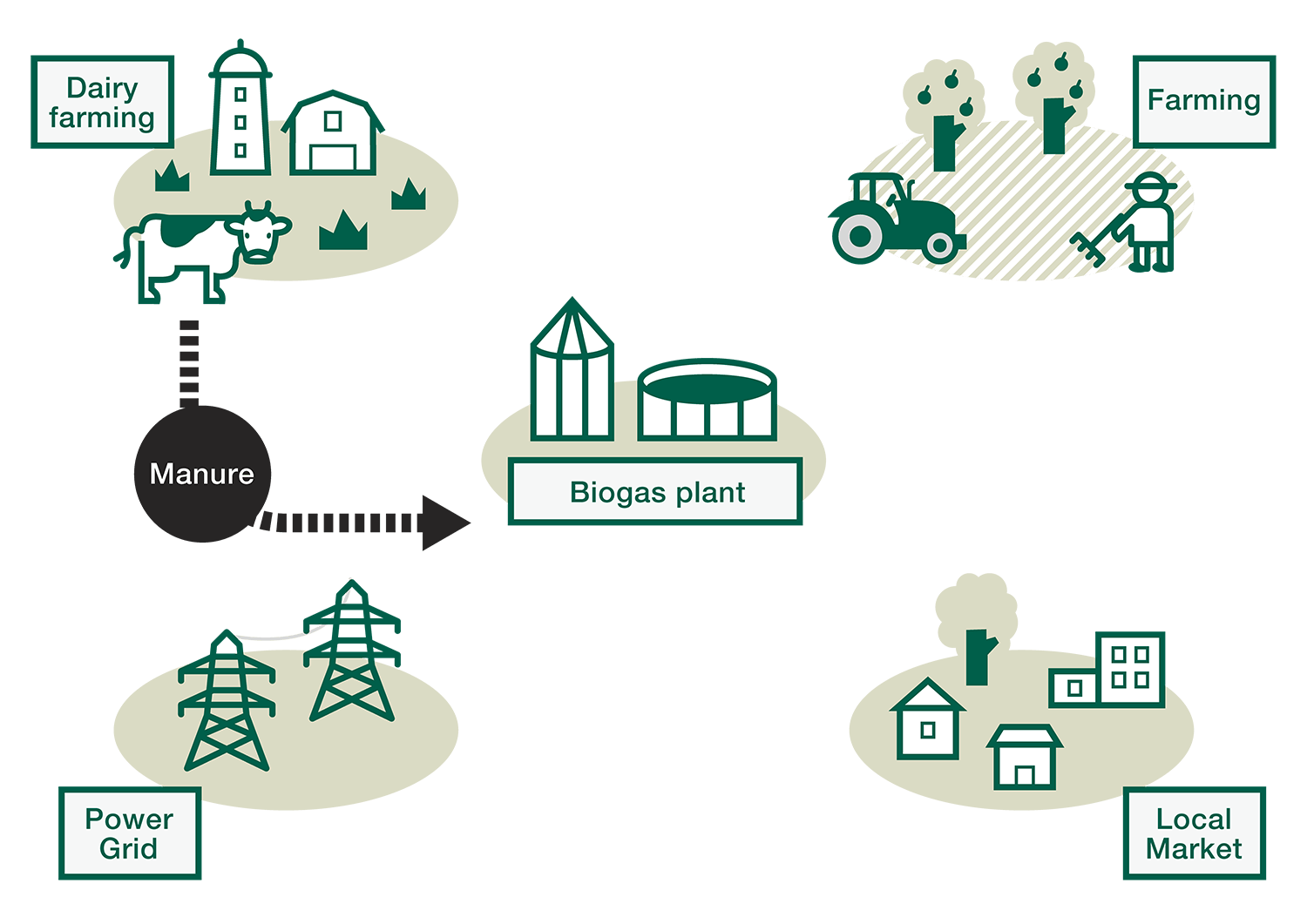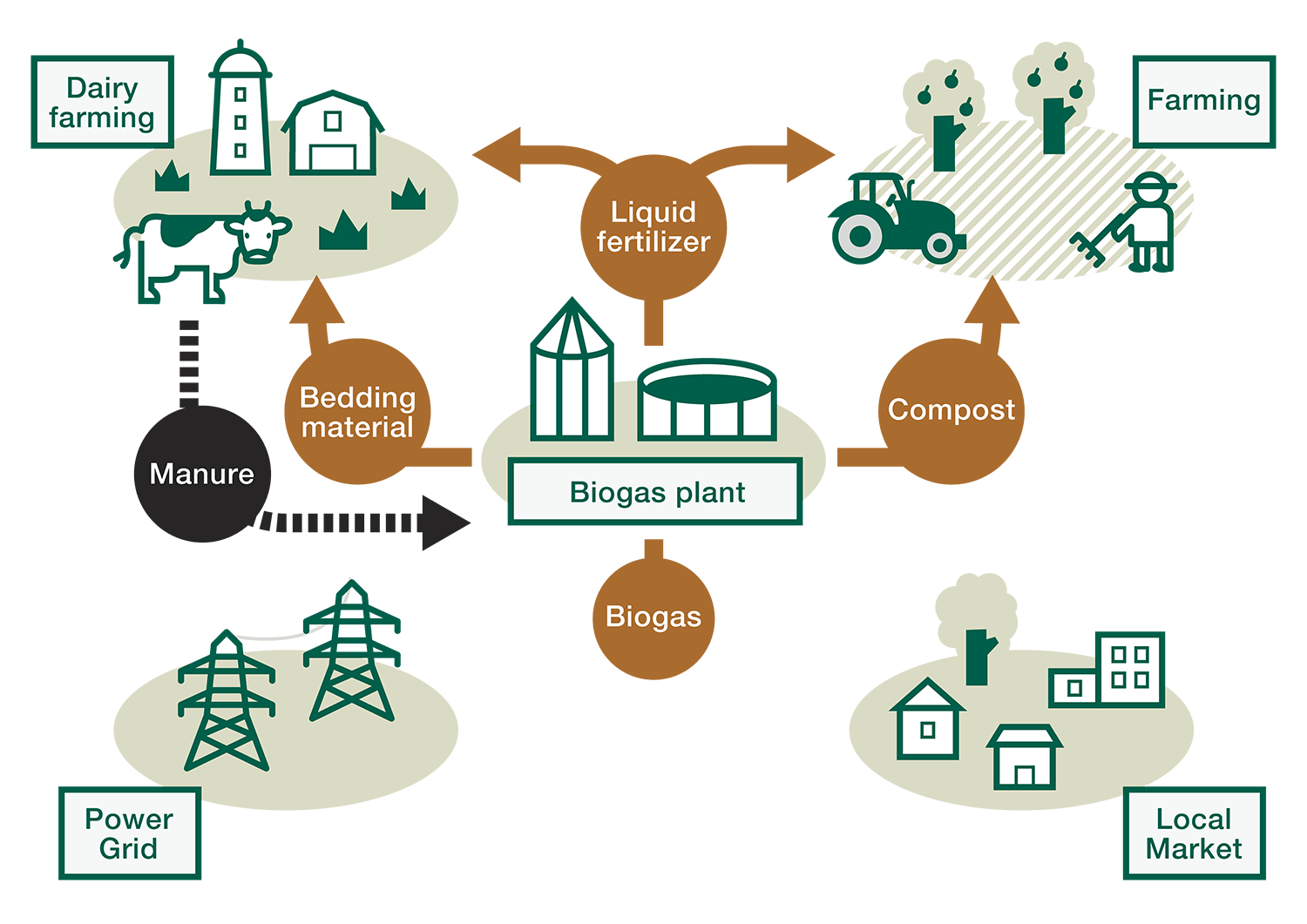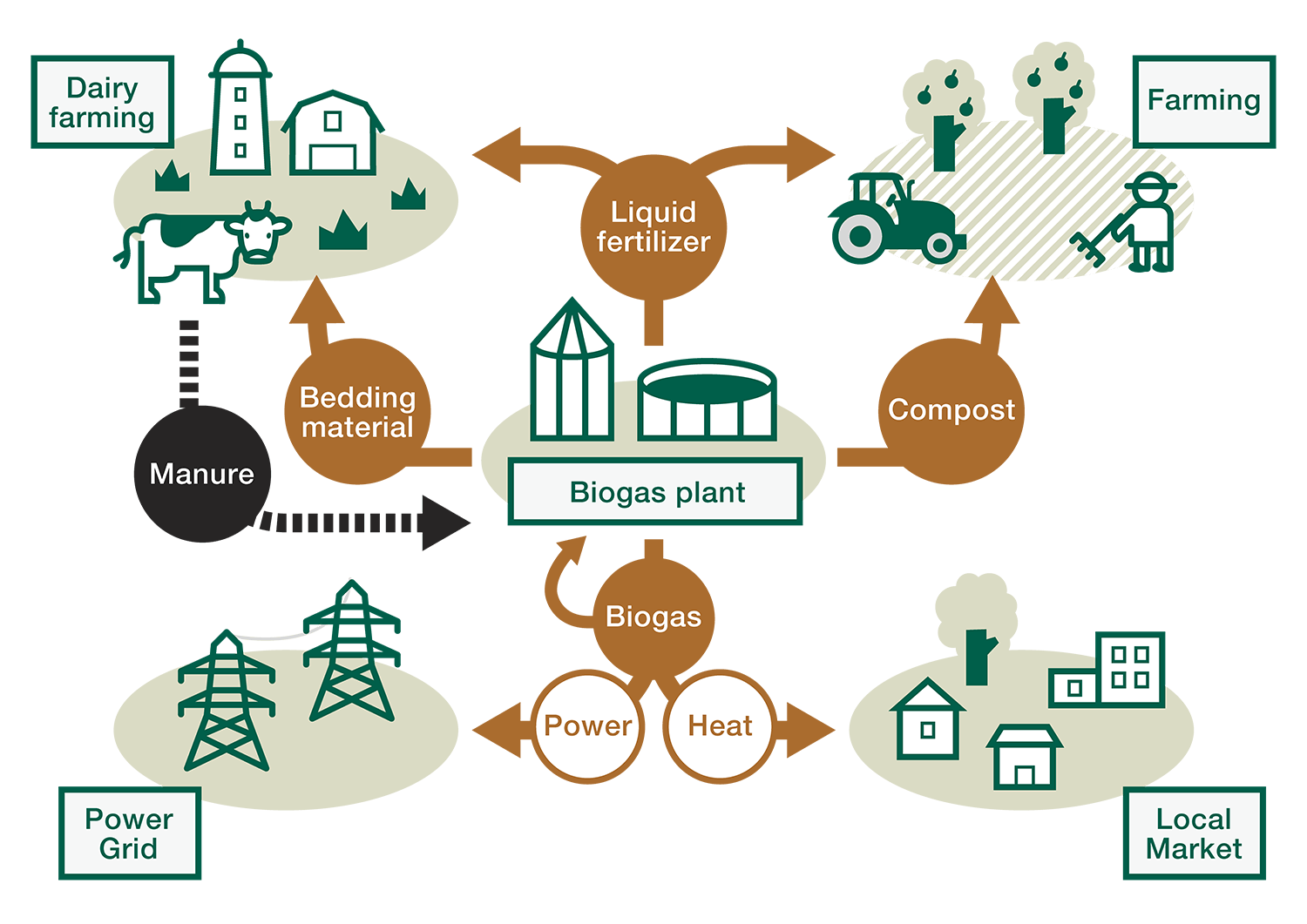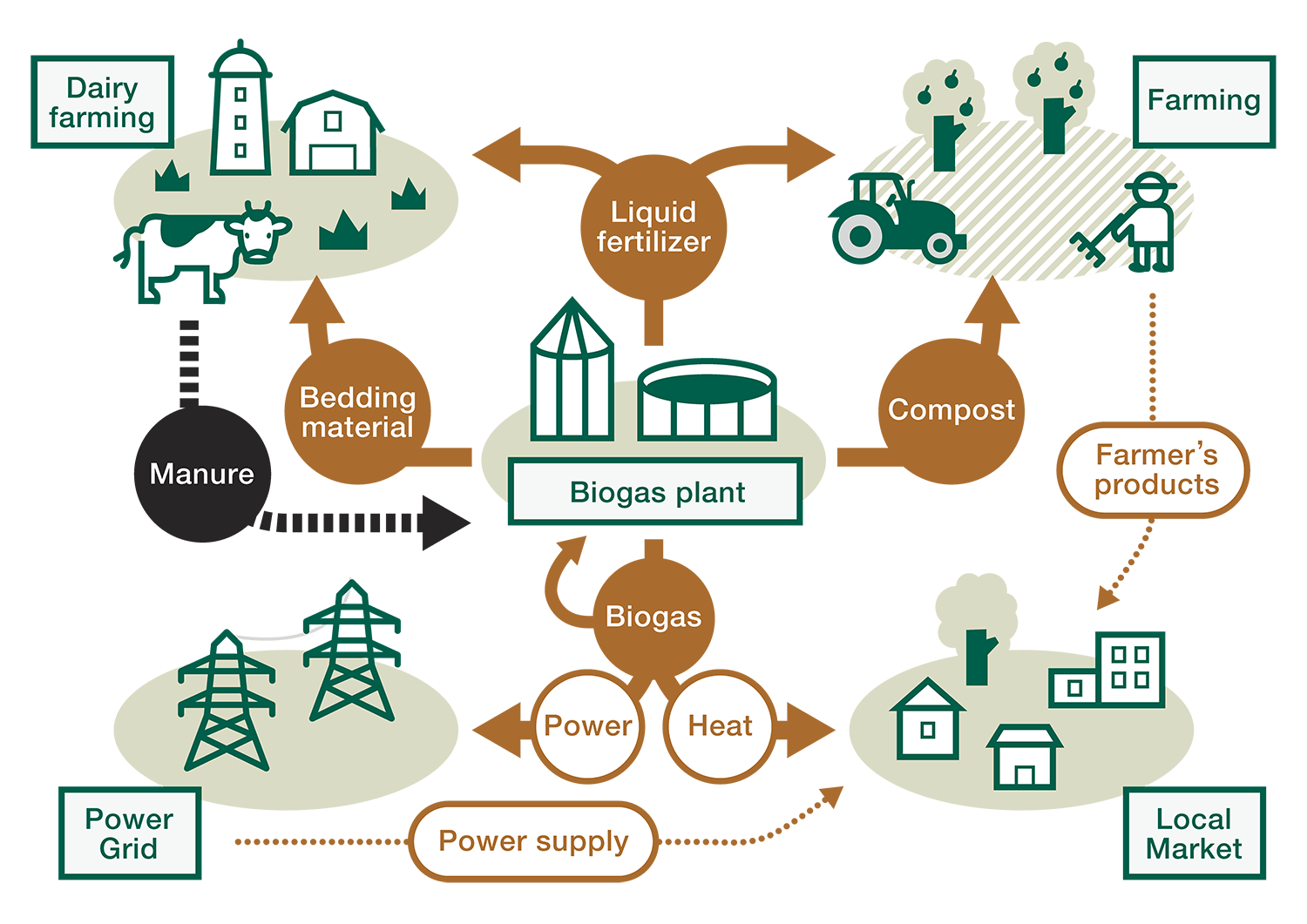Circular Society
Human cycle in harmony with Bio cycle
They nurture new plants and then animals in a sustainable manner.
Since industrial revolution, human beings have been exploiting underground resources for new materials and energy, producing plastic wastes and green- house effect gases. Conventional agriculture destroyed healthy biodiversity in soil. In order to sustain our mother nature, we better change our activity style and start human cycle in harmony with bio cycle.
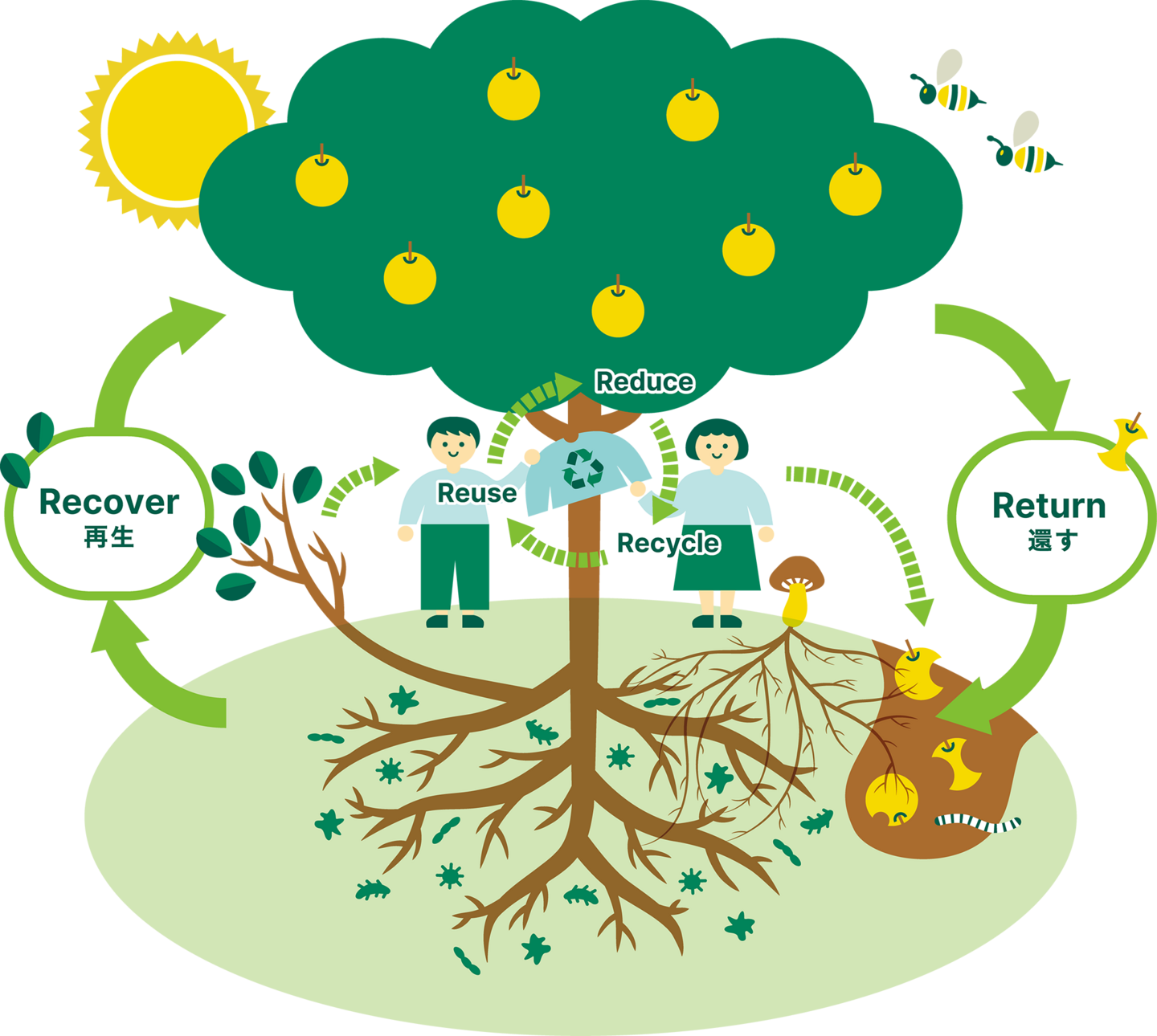
Economy × Energy
Energy self-sufficiency
We buy fossil fuels, such as gasoline, natural gas and kerosene, from abroad. For that, It is estimated that we pay more than one trillion yen per year, which is almost equal to gross value of agricultural production in Hokkaido.
Energy self sufficiency does not only mean decarbonization, but also money saving. The amount of money decreased by decarbonization can be invested for future. In energy-advanced areas, people accelerate decarbonization and energy self-sufficiency, investing for renewable energy projects.
Energy self-sufficiency
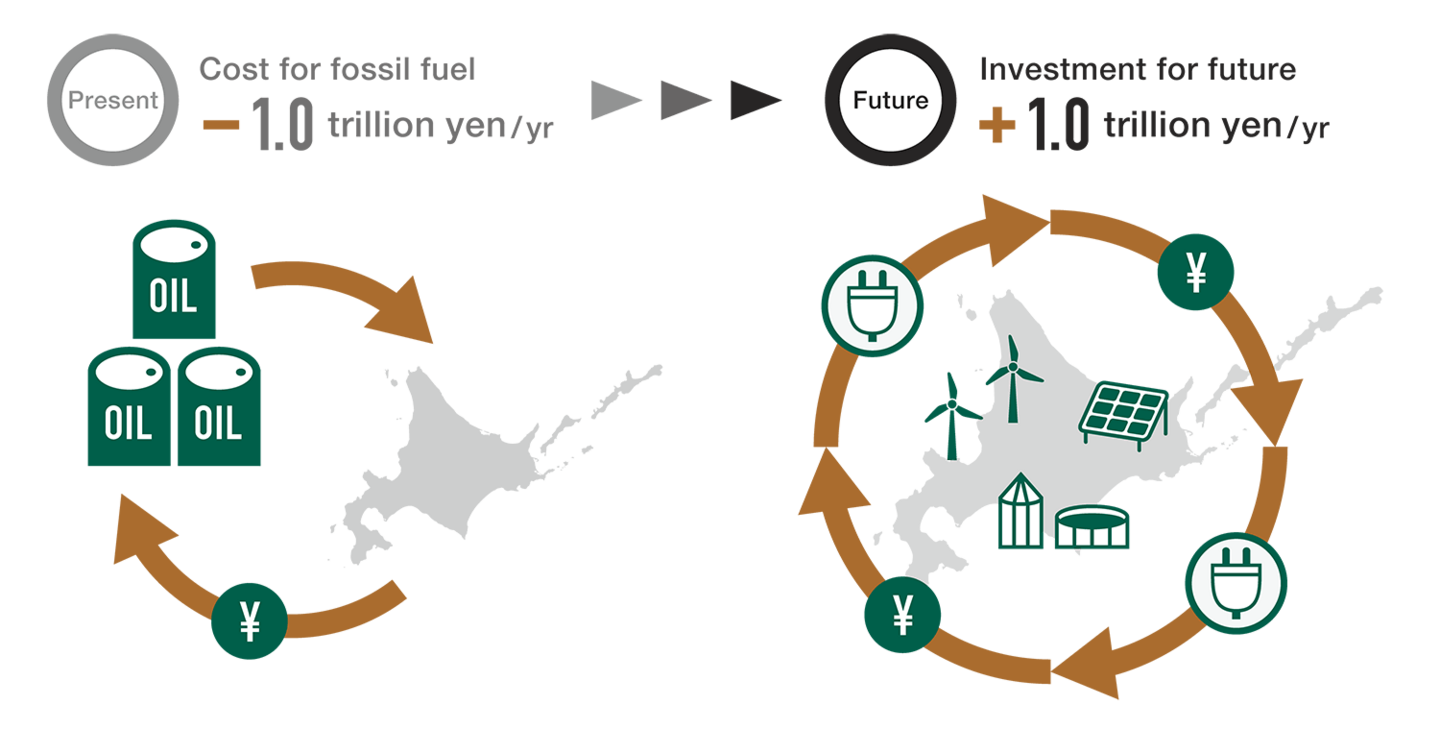
| Present | Dependent on fossil fuel from abroad |
|---|---|
| Desirable future | Self sufficient in energy in regional area |
Biogas Plant
Key facility for circular agriculture
Biogas plants transform livestock manure or food waste to digestates producing biogas through anaerobic fermentation. Biogas is valorized in electricity, heat, biomethane or biofuel. Digestates are efficiently spread on agricultural fields and serve as composts which allow a reduction of chemical fertilizer.
Digestates help soil to be healthier and well balanced with lots of microbes. The healthy soil and sun shine grow vegetables and grasses for the next round of farming cycle. Biogas become renewable energy source in circular agriculture.
Biogas plant project
Circular agriculture for the region, by the region
| 1. Manure processing | Reduction of turning process and pollution |
|---|---|
| 2. Digestates spreads | Reduction of Stink, pathogens, weed seeds and chemical fertilizer |
| 3. Reuse for bedding | Reduction of cost for bedding and disease |
| 4. Compost spreads | Reduction of chemical fertilizer |
| 5. Renewable energy | Stable income from FIT |
| 6. Heat | Regional heat source |

